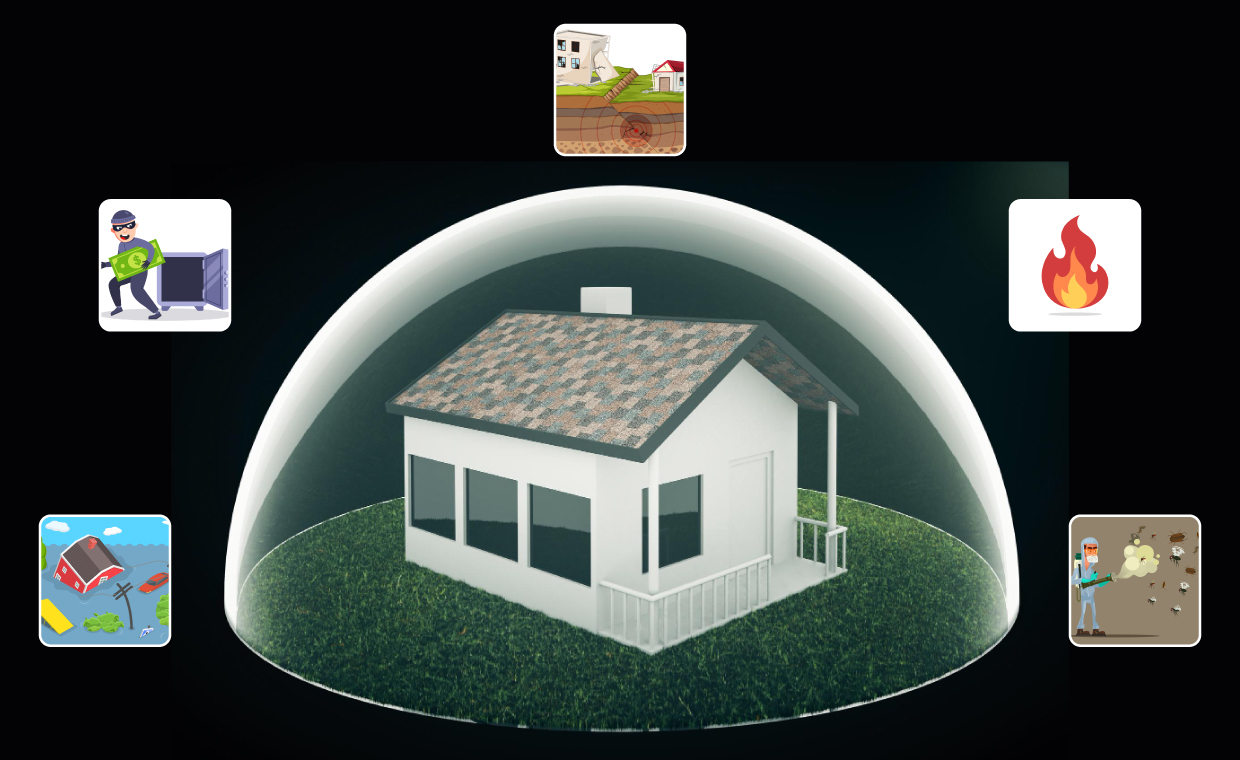
Mortgage Definition
The Oxford Dictionary defines mortgage as “a legal agreement by which a bank, building society, etc. lends money at interest in exchange for taking title of the debtor’s property, with the condition that the conveyance of title becomes void upon the payment of the debt.”
According to Section 58 of The Transfer of Property Act, 1882 “a mortgage is the transfer of an interest in specific immoveable property for the purpose of securing the payment of money advanced or to be advanced by way of loan, an existing or future debt, or the performance of an engagement which may give rise to a pecuniary liability.” A mortgagee is a person who lends the loan against the mortgage of property, and the mortgagor is the person who receives the loan. To keep things simple, we will henceforth refer to the mortgagee as the lender and mortgagor as the borrower.
When it comes to home loans, the lender provides a loan against the mortgage of the property itself. The mortgage gives them the right to acquire or sell the property if the borrower, who is the owner of the property, either defaults on the payment or breaks any rules or conditions which were set at the time of providing the loan (listed in the agreement).
A mortgage can be affected only on immovable property. Immovable property includes land and benefits that arise out of things attached to the piece of land like trees, buildings etc. However, the actual possession of the mortgaged property need not always be transferred to the lender or mortgagor.
Types of Mortgages
There are 6 types of mortgages recognized legally, and in this article, we will try to explain all the six mortgages types which are listed below:
01. Simple Mortgage
02. Mortgage By Conditional Sale
03. Usufructuary Mortgage
04. English Mortgage
05. Mortgage by Deposit of Title Deeds, and
06. Anomalous Mortgage
01. Simple Mortgage
A simple mortgage is where the possession of the house is not transferred to the lender but remains with the borrower. Only the right to sell the property is transferred to the lender. The borrower can enjoy all the benefits of the mortgaged property but cannot sell it. They bind themselves to paying the loan back with interest, on the failure of which the mortgaged property can be sold by the lender to recover the losses, as far as necessary. However, the mortgagee, or lender, cannot directly sell the property. They can only sell the mortgaged property through the intervention of the court. The lender will have to obtain a decree from the court for the sale of the said property.
Additionally, the borrower must have bound themselves for the repayment of the loan out of their own free will and should not be coerced. The lender has no right to immediately take possession of the property if the borrower has defaulted on the payment of their loan. They (the lender) can only sell the mortgaged property by first going to court first.
02. Mortgage by Conditional Sale
In this type of mortgage, the borrower sells the property to the lender under certain conditions. This is an “apparent sale” and does not amount to an absolute or confirmed sale.
There are three conditions which accompany the sale of the property in this type mortgage. If the mortgage money is not paid on a certain date, as agreed by both the parties, the sale shall become absolute. If the mortgage payment is made, then the sale will become void. And if the mortgage payments are completed successfully, the buyer or lender shall transfer the property back to the seller or borrower. This transaction is called a mortgage by conditional sale and the lender or the mortgagor is known as the mortgagee by conditional sale.
03. Usufructuary Mortgages
Usufruct means the right to enjoy another person’s property and enjoy the benefits of the same. Usufructuary mortgages refer to those mortgages where the lender is given the benefit of using the borrower’s mortgaged property and enjoying the profits of the same. This means that the lender is entitled to rents or profits received from the borrower’s property, however, the title of the property will remain with the latter.
Benefits of the mortgaged property include receiving rents and profits with respect to the interest amount or loan amount or both. The profits received will be in lieu of interest, or in payment of the mortgage loan amount, or partly in lieu of interest and partly in lieu of the mortgage loan amount. After the borrower makes the payment, the property will be transferred back to them. This transaction is called a usufructuary mortgage and the lender is called a usufructuary mortgagee. However, these mortgage types are not available in many countries including India.
04. English Mortgage
This mortgage type requires the borrower to make an absolute transfer of ownership of the mortgaged property to the lender. The borrower binds himself personally for the repayment of the loan. They essentially declare to repay the loan amount on a particular date and then transfer the property to the lender. The mortgage takes effect when the right to sell, possession and usufruct is transferred to the lender on the condition that the latter will transfer the property back to the borrower once the loan amount is repaid according to the terms and conditions. The lender may, under certain circumstances sell the mortgaged property without the intervention of the court and the right of foreclosure is not transferred to the lender or mortgagor. This transaction is called an English mortgage.
05. Mortgage by Deposit of Title Deeds
Under this mortgage type, the borrower provides the title documents of their immovable property to the lender, with intent to obtain a loan on the same. There needs to be a debt, and the security for the same should be obtained by the deposit of title deed.
Under Section 96 of the Transfer of Property Act, 1882, these type of mortgage of property (deposit of title deeds for a loan) is referred to as a simple mortgage.
06. Anomalous Mortgage
This mortgage refers to those types of mortgage that do not fall under any of the aforementioned categories. It can also refer to a combination of two or more types of mortgages and may, therefore, take various forms depending upon the customs, local usage, or contract.
Conclusion
When taking out a mortgage, you must always take into consideration the various types allowed by mortgage law and choose the one that suits your needs the best. You must also always be cautious when mortgaging your property.
If you want to learn more about mortgages, you may refer to the following articles:
3 Tips to Ensure Approval from Your Mortgage Lender!
10 Tips for First-Time Home Buyers!
Advantages and Disadvantages of Lease!
Author Bio
Author: Savan Dhameliya
Co-Author: Het Desai






























